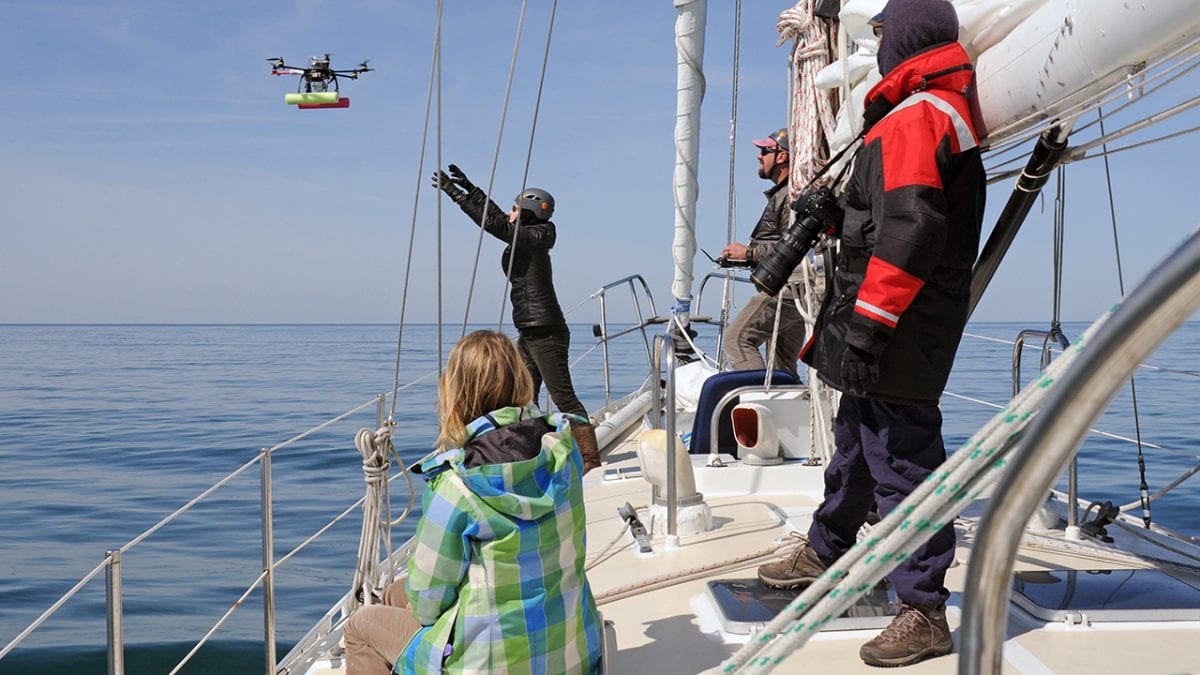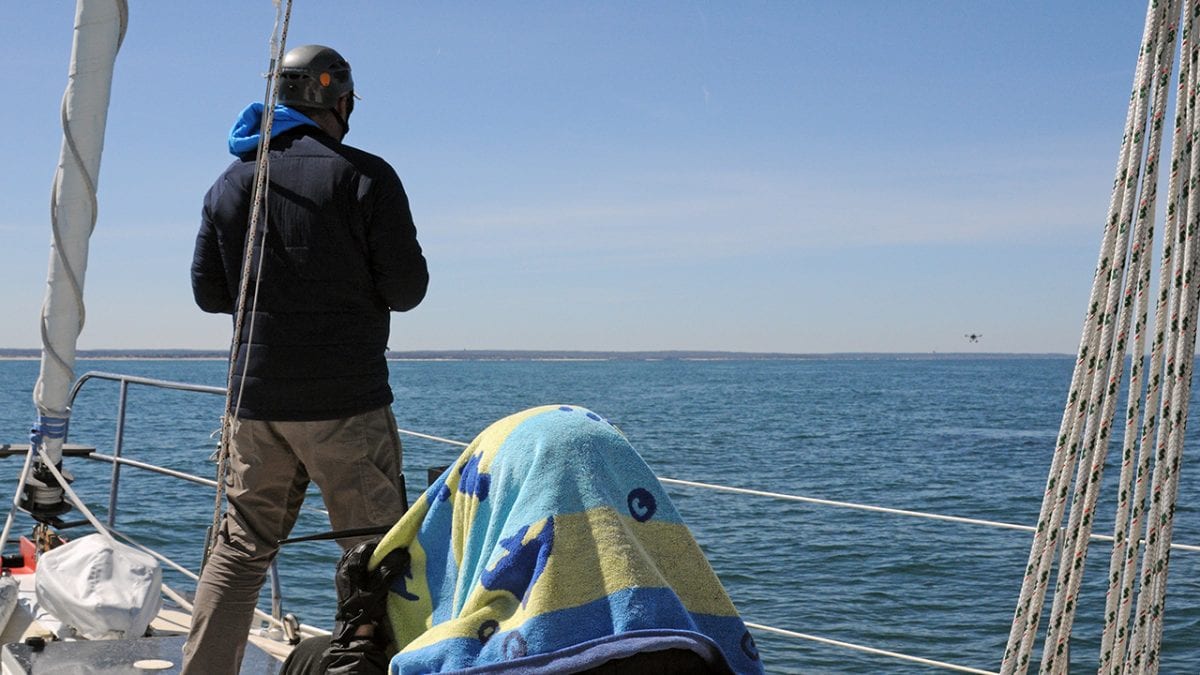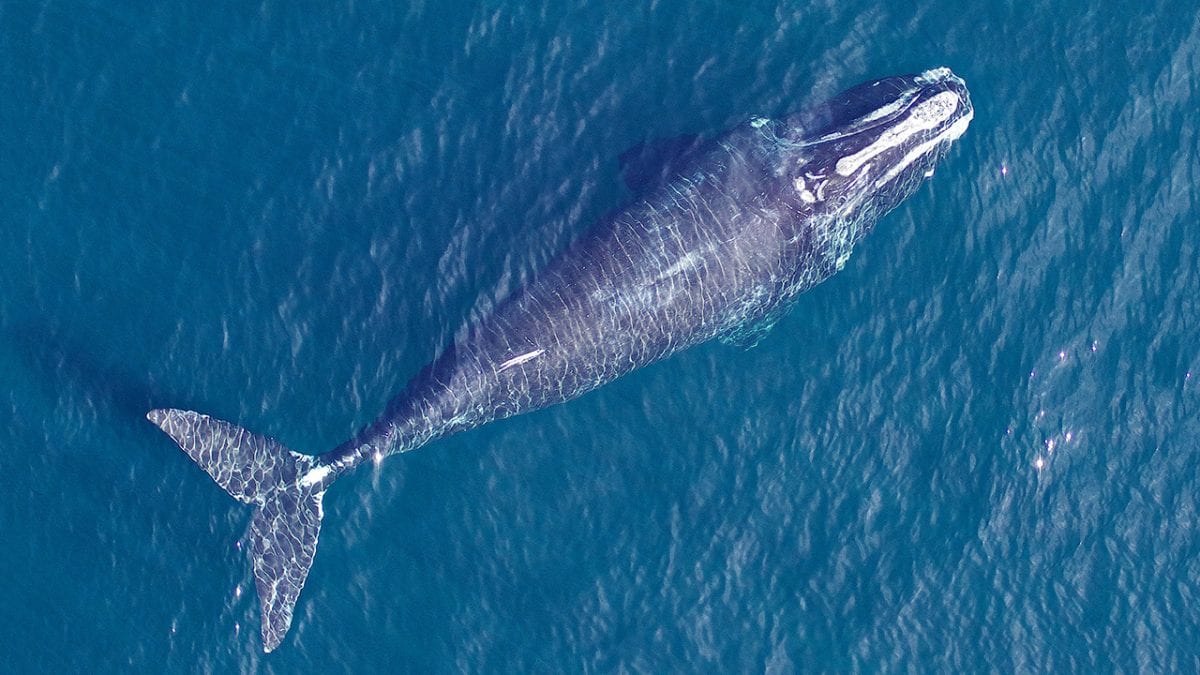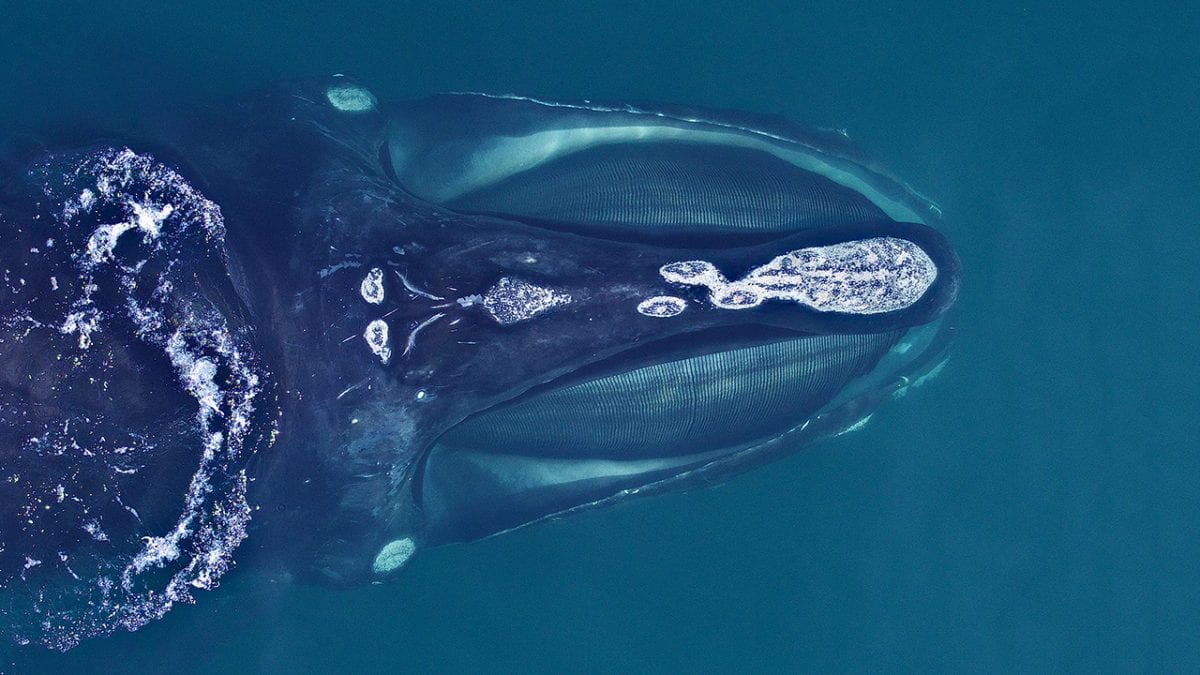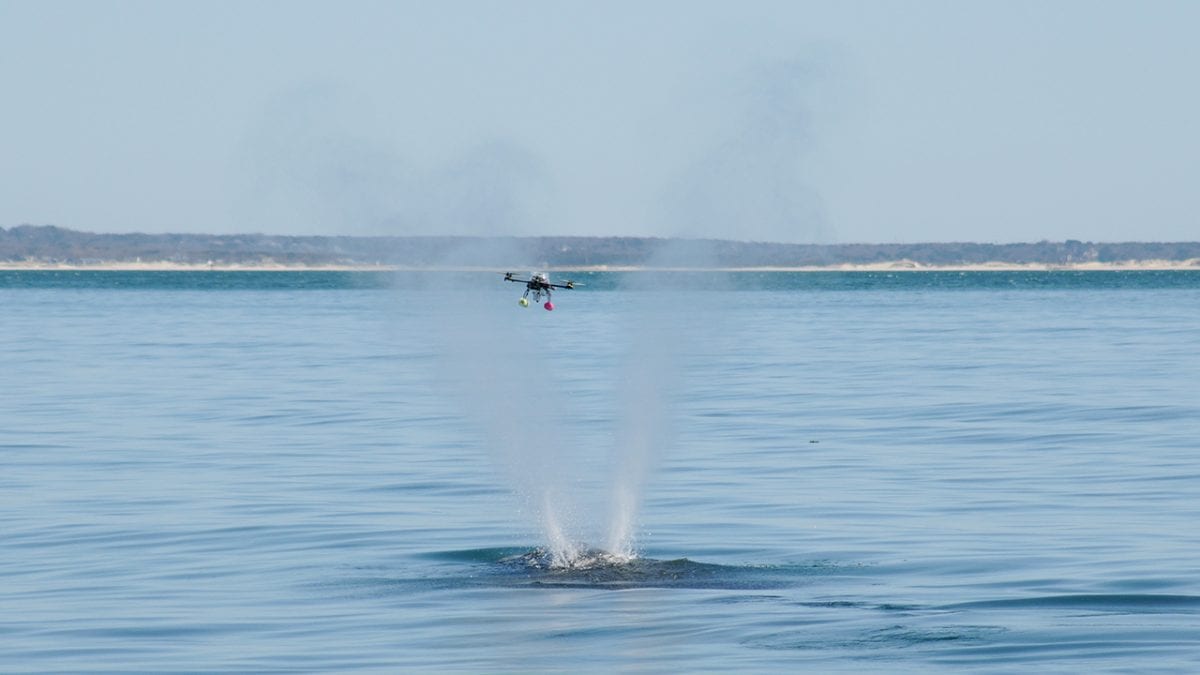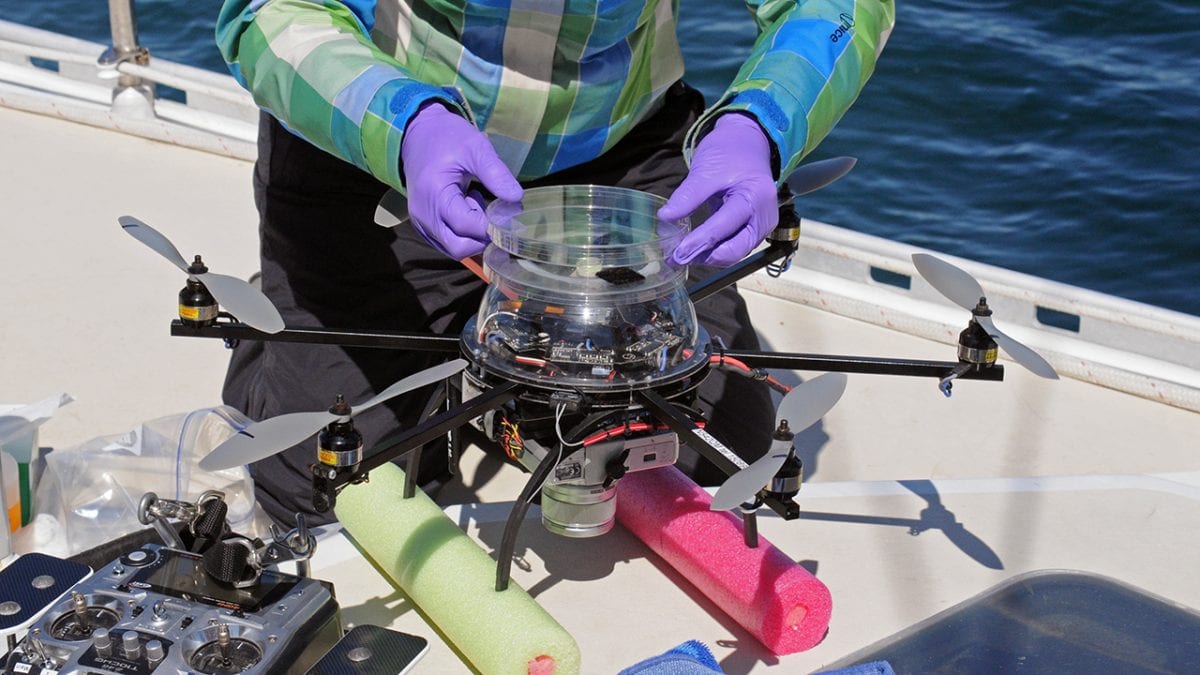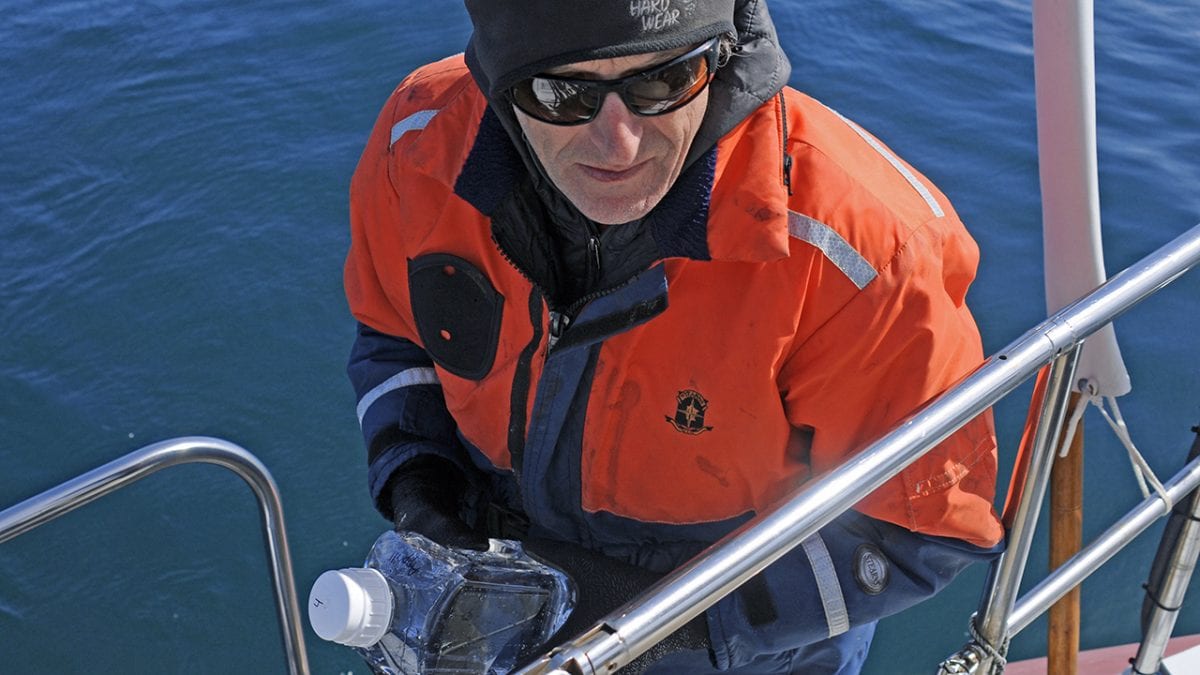- Drones are providing a powerful new tool for whale research and conservation. Here, NOAA’s John Durban (center rear) uses a remote control to guide a hexacopter into the outstretched hands of his NOAA colleague, Holly Fearnbach, as WHOI microbiologist Amy Apprill (seated) and New England Aquarium whale specialist Marilyn Marx look on. Durban makes it look easy, but maneuvering a drone from a rocking sailboat is anything but. (Photo by Véronique LaCapra, Woods Hole Oceanographic Institution)
- Sitting on the deck in the bright sunlight, Fearnbach uses a towel to shade a monitor screen showing a video feed from the drone’s camera. By looking at the video, Fearnbach sees what the camera “sees” in real time—and can tell Durban which way to fly the drone in order to position it over a whale to take high-resolution images and sample its blow. (Photo by Véronique LaCapra, Woods Hole Oceanographic Institution)
- In the past, getting aerial photographs of whales meant taking them from a plane or helicopter. A small drone equipped with a specialized camera can get close to a whale without disturbing it, resulting in images of unprecedented quality and detail. In a process known as photogrammetry, a team led by NOAA’s Wayne Perryman will use the images to estimate the size of the whales, assess their body condition, and draw conclusions about their overall health. Research approach of whales using the hexacopter was authorized by NMFS permit #17355 and flights were authorized under an MOU between NOAA and the FAA (Class G MOU #2016-ESA-3-NOAA). (Photo by John Durban and Holly Fearnbach, NOAA Southwest Fisheries Science Center, and Michael Moore, Woods Hole Oceanographic Institution)
- This close-up image was taken as the drone approached a whale to collect a sample of its blow; the animal's still-closed blowholes are visible as two slits in the center of its head. The whale is filter-feeding on tiny crustaceans near the surface of the water, so its mouth is open, revealing its baleen plates. High-resolution photographs like this one allow scientists to identify individual whales by their unique pattern of callosities—the patches of rough skin on the whale’s head. The dark callosities are covered with light-colored cyamids or “whale lice,” making them appear white. Research approach of whales using the hexacopter was authorized by NMFS permit #17355 and flights were authorized under an MOU between NOAA and the FAA (Class G MOU #2016-ESA-3-NOAA). (Photo by John Durban and Holly Fearnbach, NOAA Southwest Fisheries Science Center, and Michael Moore, Woods Hole Oceanographic Institution)
- The drone hovers in the whale’s blow to collect a sample. The V-shaped spray pattern is characteristic of baleen whales such as North Atlantic right whales, which have two blowholes through which they breathe. Whales with teeth—such as sperm whales—have only one blowhole. Research approach of whales using the hexacopter was authorized by NMFS permit #17355 and flights were authorized under an MOU between NOAA and the FAA (Class G MOU #2016-ESA-3-NOAA). (Photo by Véronique LaCapra, Woods Hole Oceanographic Institution)
- To get a sample of a whale’s blow, the researchers attach a sterilized petri dish to the top of the hexacopter. After a successful flight, they transfer the collected liquid to a small plastic vial and freeze it. Back at WHOI, Apprill and her colleague Carolyn Miller will use a technique known as metagenomics to analyze genetic material and identify microbes in the blow. (Photo by Véronique LaCapra, Woods Hole Oceanographic Institution)
- WHOI biologist Michael Moore collects a sample of seawater off the back of the boat. Apprill and Miller will compare the water’s microbial community to what they find in each blow sample, to distinguish microorganisms that live in the water from those specific to a whale’s respiratory tract. Respiratory system microbes are the most common source of disease in whales. (Photo by Véronique LaCapra, Woods Hole Oceanographic Institution)
SEARCH RELATED TOPICS: Marine Mammals
Image and Visual Licensing
WHOI copyright digital assets (stills and video) contained on this website can be licensed for non-commercial use upon request and approval. Please contact WHOI Digital Assets at images@whoi.edu or (508) 289-2647.
